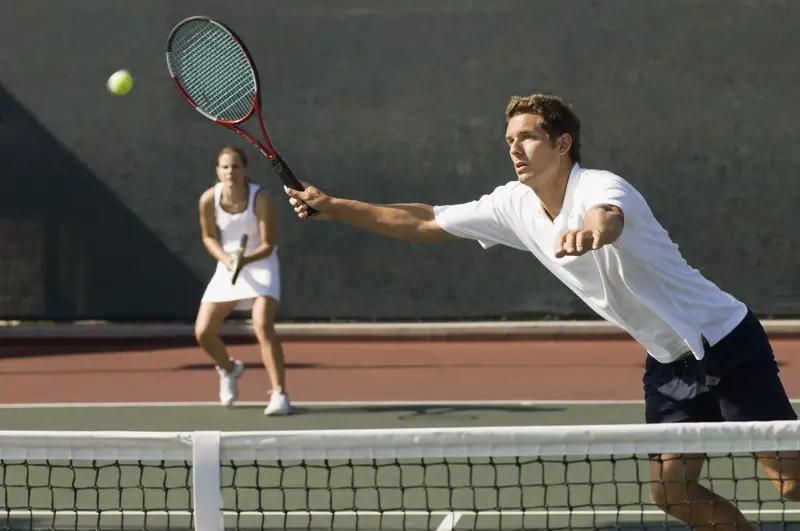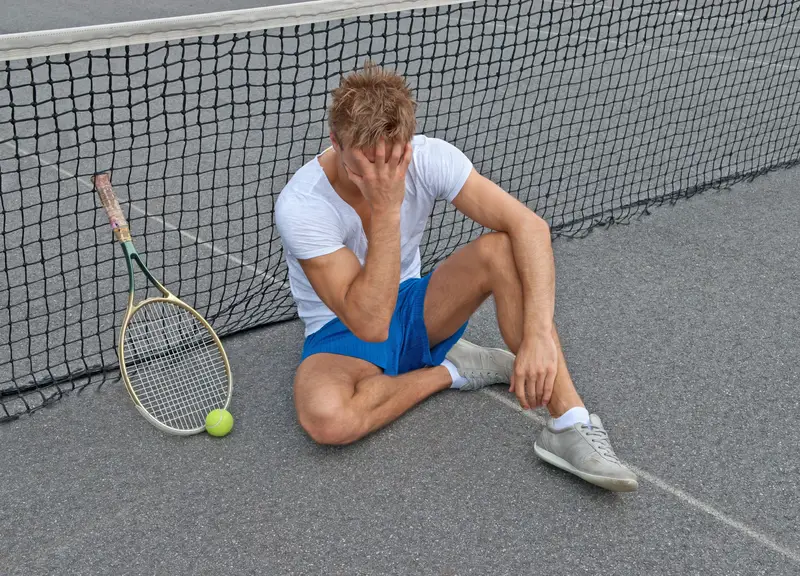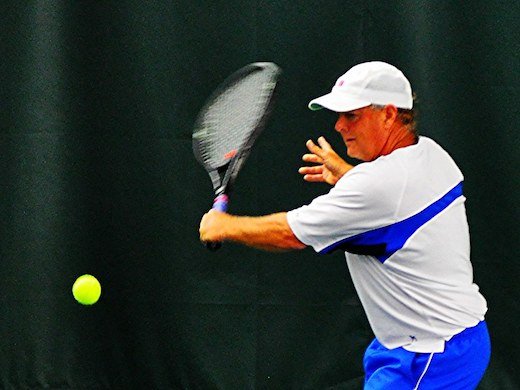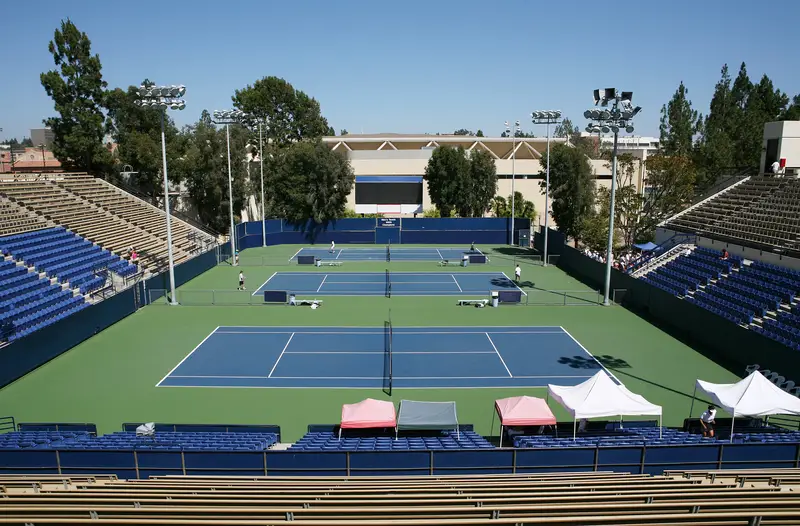- Intercepting a Ball in Doubles
- Usually Describes a Volley
- Done When the Opponents Are Under Pressure
Your Guide
 Gavin Davison
Gavin Davison
If you’ve ever taken a coaching session for doubles before, you’ve likely heard the coach bang on about ‘POACHING’.
This is a term that describes the process of moving out of your standard position to attack a volley, often intercepting the ball somewhere over the middle line.

The objective of poaching a ball is to gain an attacking position in the point rather than watching the two baseline players trade strokes.
Of course, some balls are easier to poach than others, and it all depends on how sharp you are with coming across to take the volley.
As you’ve seen above, there are three fundamentals relating to poaching in tennis.
It describes intercepting a ball, it involves a volley, and the most effective way to poach is when your opponents are under some kind of pressure.
And if you watch top-level doubles, poaching occurs in the vast majority of points.
Take a look at this video of the Bryan brothers to see what I mean:
So now, with the description of poaching clarified, let me go into some further details on how you can improve your poaching game in doubles.
The Art of Great Poaching
It’s not overly complicated to understand what poaching entails, as you’ve already seen above.
However, many people do not have a fundamental understanding of how to poach effectively.
For that reason, I’d prefer to concentrate on improving your poaching skills rather than focusing on some of the finer details of what poaching ACTUALLY CONSIST OF.
On that note, I’ve put together my top tips for effective poaching right here.
Move Forward to the Volley
In order to hit an effective and attacking volley, you must spring forward to the ball.
Beginners and even intermediate players assume that movement to a volley involves a PURELY LATERAL MOVE, but this isn’t the case.
If you can imagine a V on the court that extends out from your feet, you need to move along this V to get the best punch possible.
So if you are taking a forehand volley, which means you are poaching from the left of the court (for a right-hander), you must move to your right and forward.
The opposite is, of course, true for a backhand volley.
It’s CRITICAL that you bend your legs and spring towards the ball here.
This FORWARD MOMENTUM is what will help you to generate power on the ball, instead of taking a bigger swing, which is never helpful when it comes to volleying!
Cross on an Appropriate Ball
Even if you were the best volleyer in the world, you wouldn’t be an effective poacher if you constantly crossed on the wrong balls.
Of course, since poaching requires that you intercept the ball before it reaches your partner, whether on the baseline or at the net, it needs to be done on a realistic chance.
In my opinion, if you have to take more than one big step to intercept a volley, it’s likely that the ball is TOO FAR AWAY.
And if you try to poach a ball that is beyond your comfortable reach, you likely won’t get a good result from the volley.
As for what an appropriate ball might look like, there are two instances really.
If your partner has drilled the ball up the middle of the court, this reduces the angles and you can look to edge across.
Alternatively, if your partner has hit a good deep shot and the person across from you is on the back foot, this is also a good time to hunt down a poach.
Don’t Be Afraid of Getting Passed up the Line
This one used to always make me laugh back when I was coaching full time.
The queries regarding poaching were always the same. People would ask, ‘but what if I get passed up the line’.
My response – GOOD!
First of all, if you get passed up the line, you have forced your opponents to hit a winner in order to win the point.
Secondly, once your opponents realize that you are looking to poach, this will always be at the back of their minds.
Believe me, this alone can result in a range of unforced errors!
And it doesn’t really matter at what point you get passed up the line either.
If it’s on a return or during a rally, it doesn’t matter.
The bottom line is that your opponents will start to concern themselves with your poaching at the net.
Constantly Move
This is something that all great doubles players do.
If you watch a doubles match at the highest level, the net players are constantly shuffling and looking to attack a loose groundstroke.
Should they be static, they wouldn’t get off the mark as quickly to poach for one, and for two, the baseline players wouldn’t then see them as a threat.
When moving, you should shuffle back as the ball passes you, and move forward as the ball passes to the opposing baseline player.
This video should help clarify what I mean:
Make sure you don’t shuffle before the ball has passed either you or the other net player, however, as it’s important to remember that they will also be looking to poach.
Hitting Your Volley at the T
Finally, you must think about where to hit your volley when you do poach.
There is no use in poaching to go back to the baseline player, as you’ve then left a big gap up the alley for them to PASS YOU!
Instead, when you get your volley, you should be targeting the T – the place where the service boxes meet in the middle.
This means you are hitting the ball between your two opponents, and if the volley player gets involved, they haven’t got much time to react.
Without question, this is your best shot at ending the point following a poach.
I hope this has helped you to understand what poaching is, and how you can do this as effectively as possible.
If so, please let us know in the comments!


